This contribution explores what constitutes a “super app”, and how such super apps have evolved over time and geographically. It builds on previous app studies research projects that have developed approaches to study mobile apps, and their history and evolution using app stores, web archives and app repositories (Dieter et al., 2019; Helmond & van der Vlist, 2021). The study contributes to the emerging area of research into super apps, and non-Western platform and app business models more generally (Chen et al., 2018; Goggin, 2021; Jia et al., 2022; Steinberg, 2020) by exploring which super apps there are, which features they have and share, and how the evolutionary trajectories of these super apps have been shaped by regional, cultural, political, economic and regulatory contexts, resulting in different types of super apps and distinct evolutionary patterns. As such, we aim to advance the study of the history and evolution of apps (or app historiography), focusing on the evolutionary process of what we call super-appification.
Most mobile apps are continuously updated via app stores and on users' mobile devices, with each new (automatic) software update overwriting the previous version. This poses challenges for the retrieval and study of historical app versions and app evolution (Helmond & van der Vlist, 2021). However, as we found in a previous study, web archives and app repositories (storage locations for previous app versions) preserve some of the material traces of apps that may still be used for purposes of historical inquiry (Helmond & van der Vlist, 2021). This contribution employs such materials to trace the emergence of super apps across geographic regions.
This study was conducted with three complementary data sets. The first was created from a corpus of super apps drawn from various existing web sources, including apps that refer to themselves as super apps in the media or on their websites. This dataset includes 44 apps. Using their (archived) websites we collected their original features, their current features, and the regions in which they are active. In addition, we collected their release dates from mobile analytics platform Data.ai, and their app store category from the Google Play store. The second dataset includes additional apps from the same developers as the initial super app, belonging to the same app family (as we called it). The other two are longitudinal datasets that we created by querying the Google Play store for [TikTok] and [WeChat] on a weekly basis between 2020 and 2022. As such, this dataset contains the weekly top-100 apps that were built for TikTok and WeChat (2020–2022), providing an overview of the evolving app ecosystems built around two of the most popular “super apps”.
The study contributes a typology of super apps based on their distinct characteristics and evolutions identified in the data sets. As Goggin has observed, “the super app concept does not really pass muster analytically ... [yet] it is useful to explore and unpack it, as it offers insights into the economic and industrial trajectories of apps” (2021: 74). Our typology that emerged from the data includes: the app family as a set of apps developed by a single company over time, often with an overarching brand identity; the app ecosystem as a co-evolving environment of auxiliary or “support” apps (Gerlitz et al., 2019) developed by third parties for a single dominant app; the swiss army knife as the integration of multiple first-party services and features into a single app; and, finally, the mega-platform, where third-party “mini-programs” or complements are developed and distributed entirely inside another app.
References
Chen, Y., Mao, Z., & Qiu, J. L. (2018). Super-sticky WeChat and Chinese Society. Bingley: Emerald Publishing.
Dieter, M. J., Gerlitz, C., Helmond, A., Tkacz, N. van der Vlist, F. N.,* & Weltevrede, E. (2019) ‘Multi-Situated App Studies: Methods and Propositions'. Social Media + Society, 5(2), 1–15. DOI: 10.1177/2056305119846486.
Gerlitz, C., Helmond, A., van der Vlist, F. N., & Weltevrede, E. (2019). Regramming the platform: Infrastructural relations between apps and social media. Computational Culture, 7. http://computationalculture.net/regramming-the-platform/.
Goggin, G. (2021). Apps: From Mobile Phones to Digital Lives. Cambridge: Polity Press.
Helmond, A. & van der Vlist, F. N. (2021). Platform and app histories: Assessing source availability in Web archives and app repositories. In D. Gomes, E. Demidova, J. Winters, & T. Risse (Eds.), The Past Web: Exploring Web Archives. Cham: Springer, pp. 203–214. DOI: 10.1007/978-3-030-63291-5_16.
Jia, L., Nieborg, D.B., & Poell, T. (2022). On super apps and app stores: Digital media logics in China's app economy. Media, Culture & Society, 44(8), 1437–1453. DOI: 10.1177/01634437221128937.
Steinberg M. (2020) LINE as super app: Platformization in East Asia. Social Media + Society, 6(2): 1–10. DOI: 10.1177/2056305120933285.
Author biographies
Anne Helmond (PhD University of Amsterdam) is Associate Professor of Media, Data & Society at Utrecht University.
Fernando van der Vlist (PhD Utrecht University) is a postdoctoral researcher of media and digital society at Utrecht University and with the Collaborative Research Centre “Media of Cooperation” at the University of Siegen.
Esther Weltevrede (PhD University of Amsterdam) is Assistant Professor of New Media and Digital Culture at the University of Amsterdam.
Michael Dieter (PhD University of Melbourne) is Associate Professor at the Centre for Interdisciplinary Methodologies at the University of Warwick.

 PDF version
PDF version
